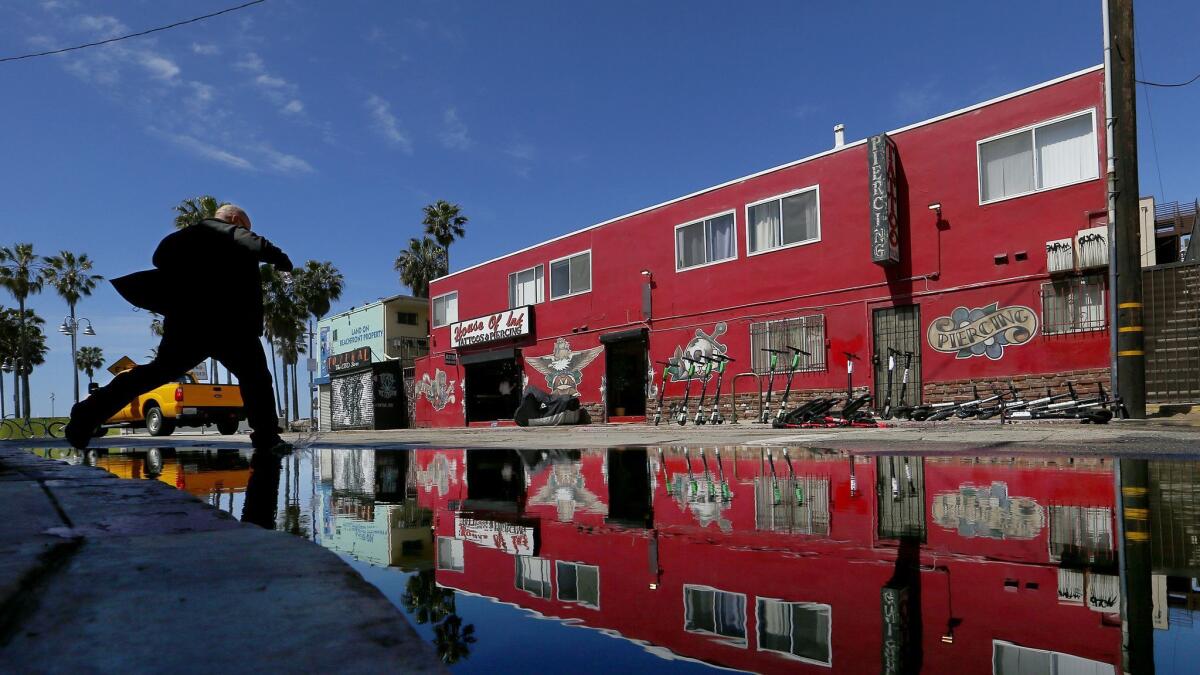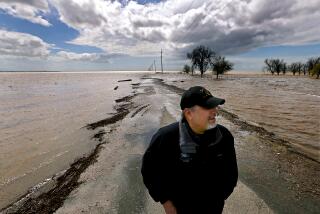Editorial: The drought’s over? Sure. But our hydrological bank account is still drained

- Share via
California had a wet November, a moist December, an absolutely drenched January and February, and so far a fairly watery March. Los Angeles exceeded its average annual rainfall a month ago, less than halfway into the “water year” (which runs from October through the following September). The Sierra snowpack is at more than 150% of average. The state is soaked.
So how come the U.S. Drought Monitor waited until Wednesday to declare California drought free for the first time in seven years? Hasn’t he been paying attention? And who is that guy, anyway?
It’s complicated. The Drought Monitor isn’t a person or even an agency, but a weekly report authored by climate scientists and issued by a partnership that includes the U.S. Department of Agriculture and an office at the University of Nebraska-Lincoln. These experts use the word “drought” to describe a shortfall on the hydrological balance sheet. It may rain steadily for 40 days and 40 nights, but a region might still be in “drought” — as climatologists, water managers and the Drought Monitor use the term — if its reservoirs are half-empty or if residents are using water at an unusually high clip.
Enter the Fray: First takes on the news of the minute »
California had a wet 2016-17 water year too. But that didn’t free the state from drought because it followed nearly a decade of unusually dry conditions in which the Sierra snowpack shrank, groundwater reserves were depleted and reservoirs drained.
It’s a little like losing your job. The income stops but the expenses remain, so you tap your savings and figure out how to make do with less.
The current wet winter, on the other hand, is like getting a new position with a great salary but little job security. The money’s nice, but after seven years of unemployment, there’s a backlog of debts to pay. And the cash could stop coming at any time.
Repaying California’s water debts means refilling reservoirs and replenishing groundwater. Only this week — after 376 straight weeks of a water deficit — has California broken even.
But not really. Central Valley groundwater was so depleted during the dry streak that much of the land shriveled up and will never again hold as much water as it once did.
The word “drought” doesn’t really work in California or the rest of the arid West, where we sometimes go years without much precipitation but can manage a sustainable water supply if we recycle wastewater and capture the few raindrops that do fall, so we can use each gallon many times over. We think of “drought” as a shortage of the stuff that falls from the sky, but that misleads us into thinking that the rain alone is our salvation or destruction. We should think instead of our hydrological bank account — and do more to sustain a healthy level of water assets, regardless of how much rain the water year brings.
Follow the Opinion section on Twitter @latimesopinion and Facebook
More to Read
A cure for the common opinion
Get thought-provoking perspectives with our weekly newsletter.
You may occasionally receive promotional content from the Los Angeles Times.










